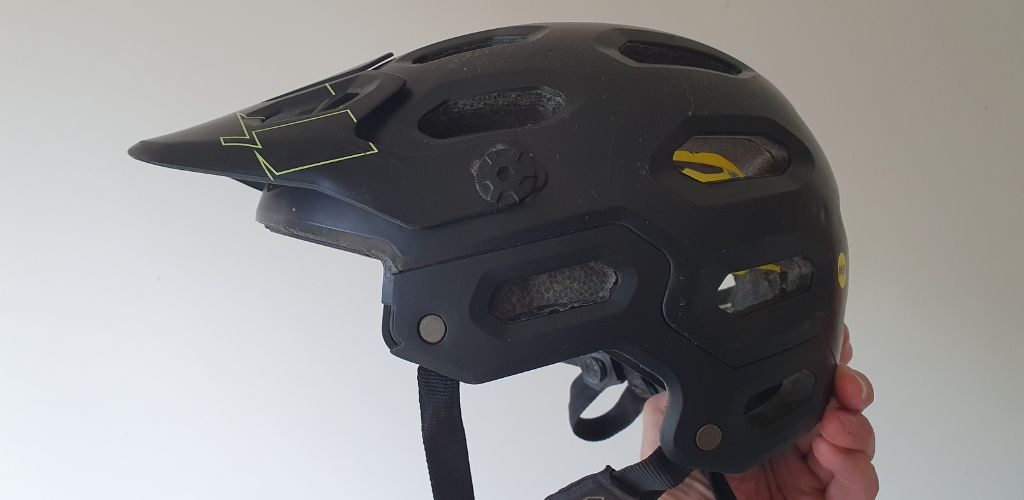Yes, mountain bike helmets do have a lifespan. Many of the materials in an MTB helmet gradually degrade over time, which is especially true when they’ve had a lot of exposure to sunlight, heat, and general rough handling as is true of mountain bike helmets.
Even if the helmet has not been involved in any kind of crash, it will still essentially expire.
The recommended time till replacing your mountain bike helmet is between 3 and 5 years.
It goes without saying, but if you’ve had any kind of crash that has significantly impacted the helmet you’ll need to immediately replace it. Keep in mind that damage to the helmet won’t always be easily apparent, as it can be internal to the structure of the helmet, or hidden under some of the external aesthetic elements of it.

Why do mountain bike helmets expire?
Material Degradation
MTB helmets are primarily made of expanded polystyrene (EPS) foam and a plastic shell. Over time, the EPS foam can degrade and lose its impact-absorbing capabilities.
This degradation can be accelerated by exposure to UV light from the sun, extreme temperatures, and chemicals like those found in insect repellents or solvents.
Wear and Tear
Regular use can lead to wear and tear of the helmet. Straps and fastenings can become stretched or damaged, the fit system might degrade, and the foam or shell can get minor dings and scratches. While these might seem superficial, they can affect the helmet’s overall integrity and safety.
Technological Advancements
While not technically directly expiry related, the fact that helmet technology is continually improving should be considered when we think about the helmet we’re entrusting the safety of our brain to.
Over a period of 3 to 5 years, advancements in safety features, materials, and design can make newer helmets much more effective in protecting the head during impacts. Staying updated with the latest helmet technology is a good practice for optimal safety.
Impact Damage
If a helmet has been involved in a crash, it should be replaced immediately. The impact can cause unseen damage to the foam structure, compromising its ability to absorb shock in future impacts.
This is especially true for severe impacts, but also applies to minor ones, as the helmet’s foam is designed to compress upon impact and may not return to its original state.
Manufacturer Recommendations
Many helmet manufacturers recommend replacing helmets every 3 to 5 years.
These recommendations are based on the expected lifespan of the materials and general use conditions. It’s a good practice to follow these guidelines.
This is after all, all that stands between us as mountain bikers, and a nasty brain injury. So, better to be on the safe side.
Inspection and Maintenance
Regular inspection of your helmet is crucial. Look for cracks in the foam, damage to the shell, and check the integrity of the straps and buckles.
Clean your helmet regularly with mild soap and water, and store it in a cool, dry place out of direct sunlight.

